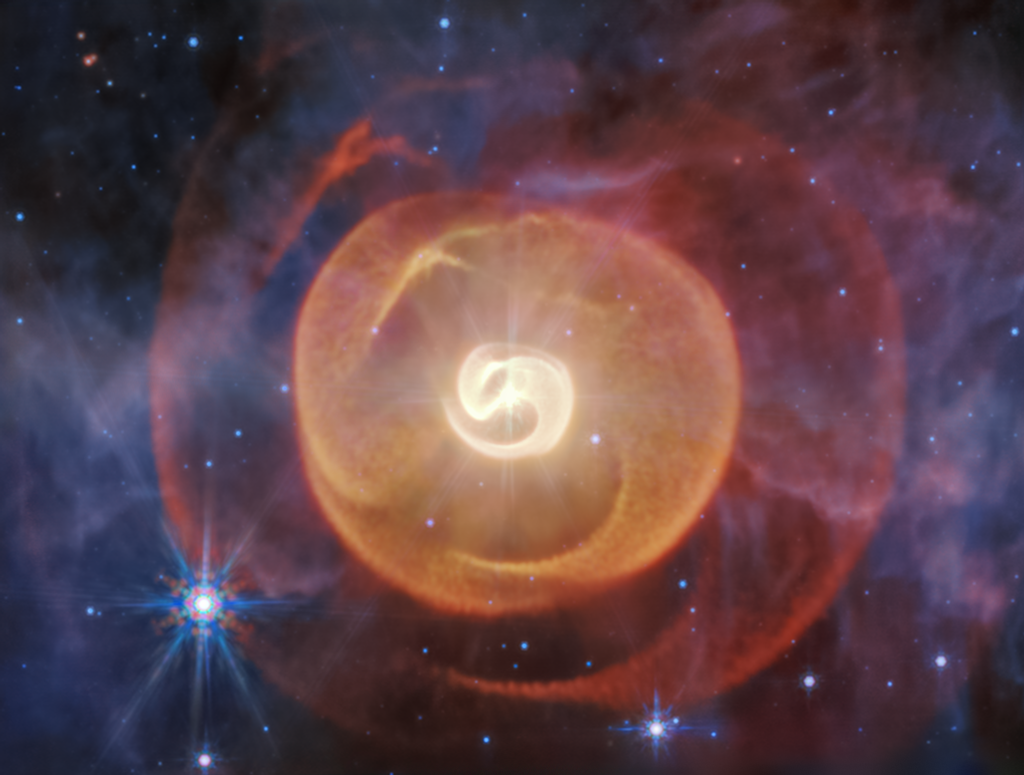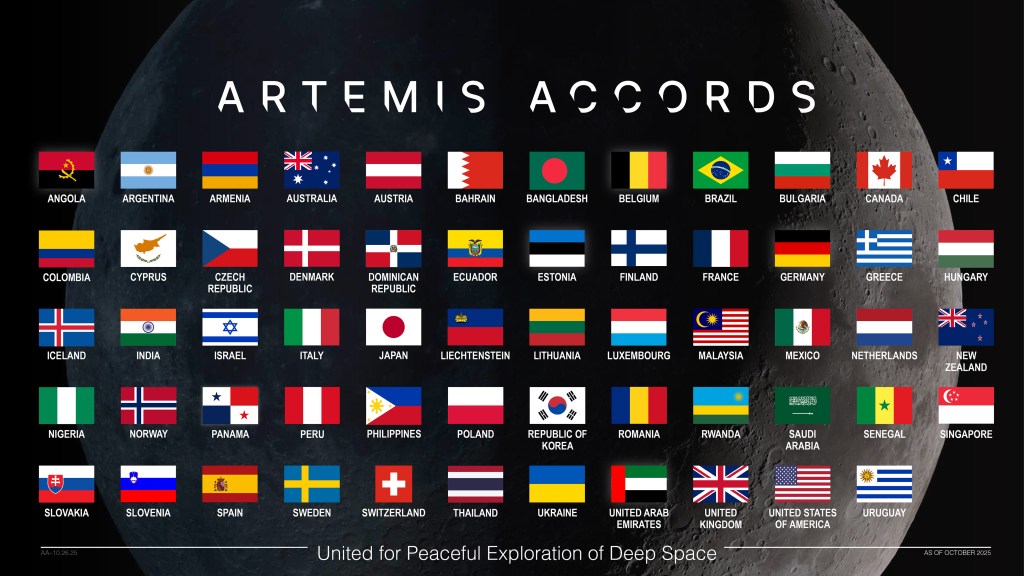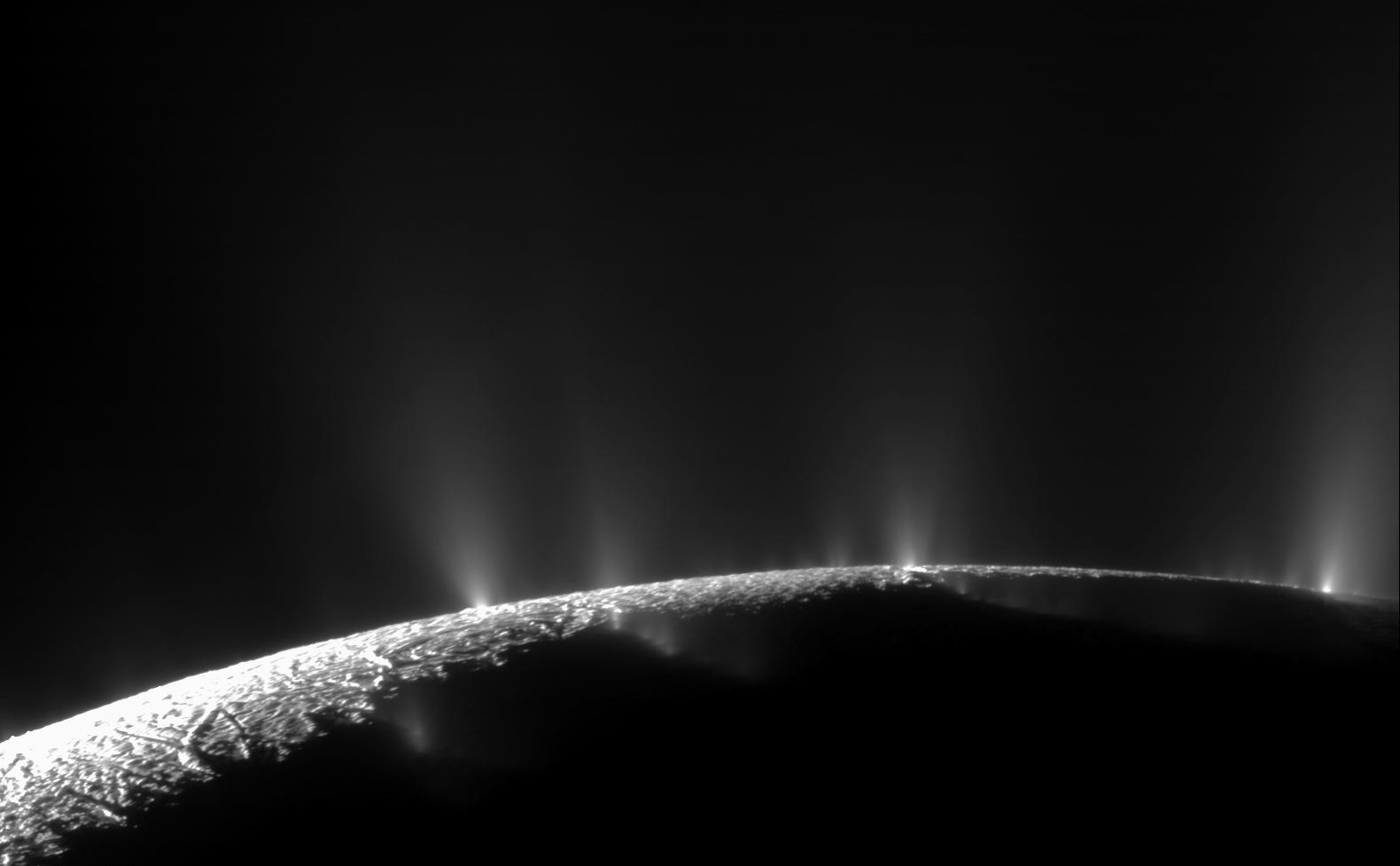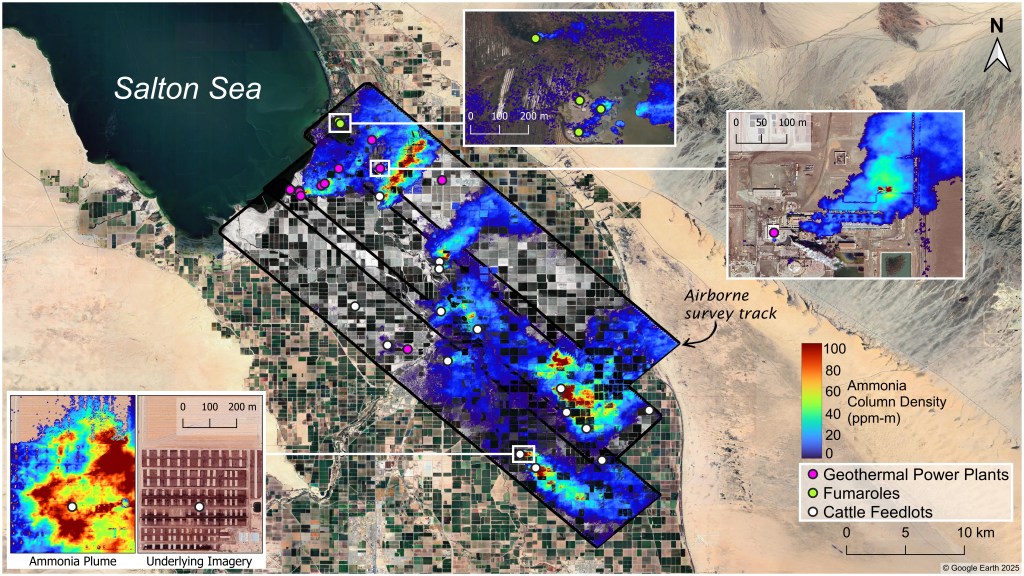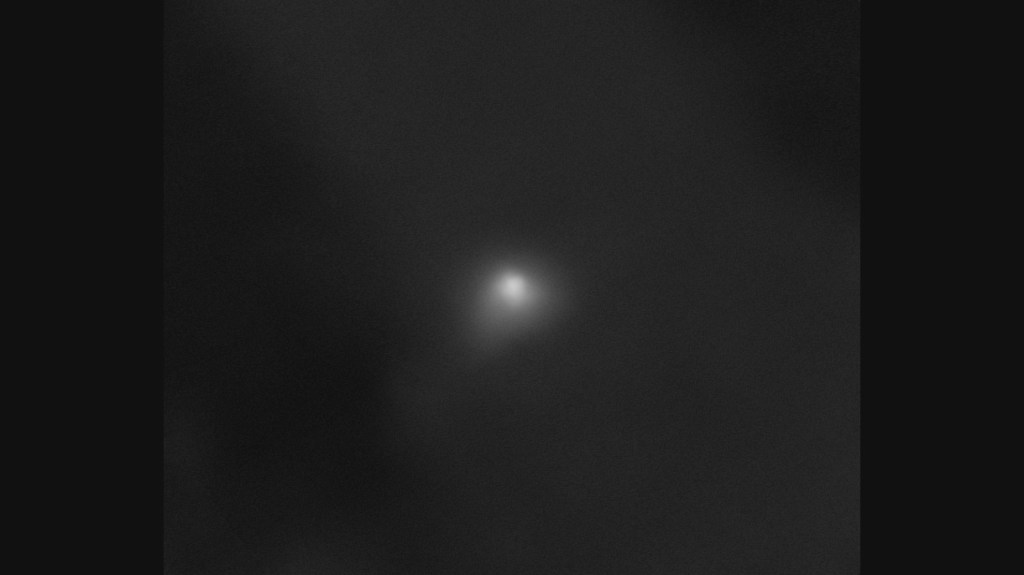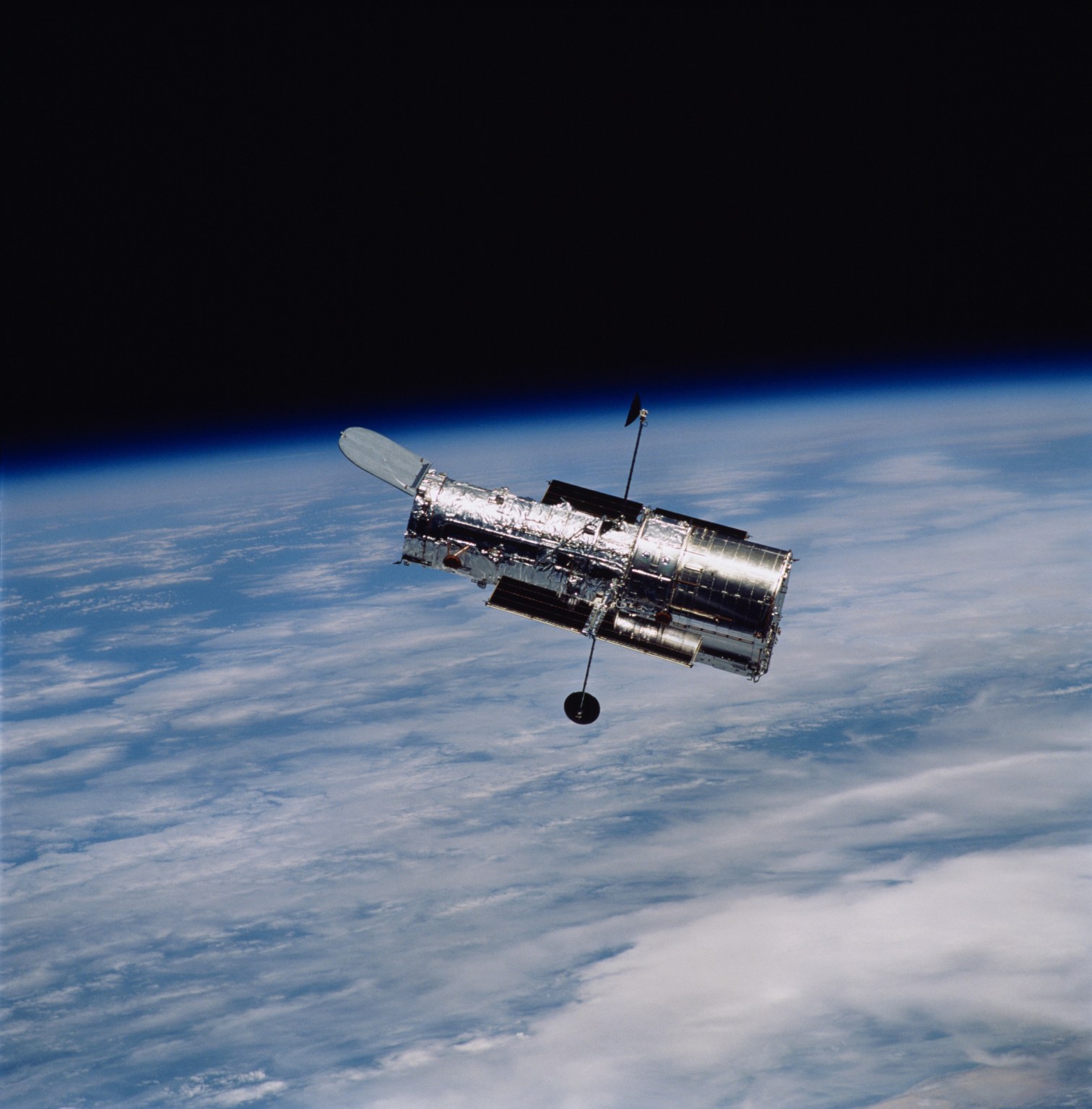1 min read
Compass and Scale Image for Comet 103/P Hartley 2
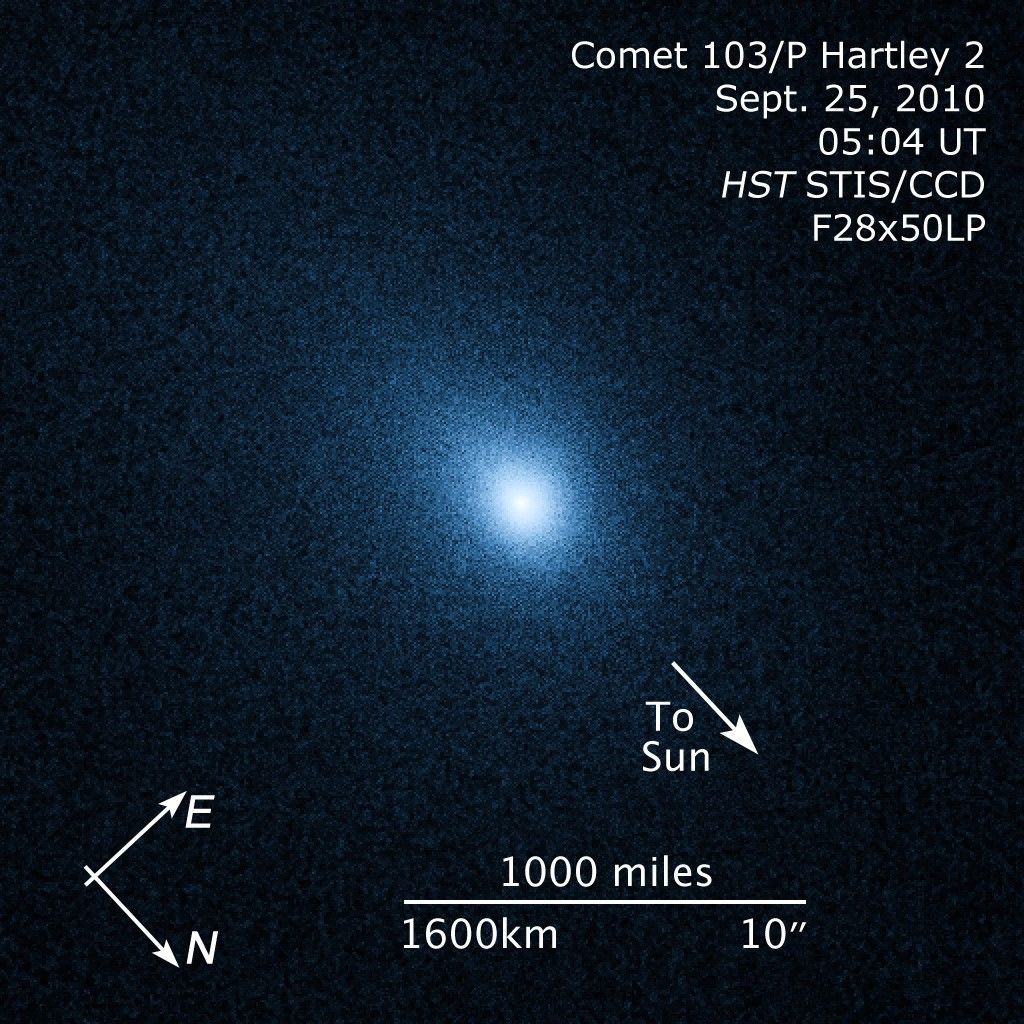
About the Object
- DistanceDistanceThe physical distance from Earth to the astronomical object. Distances within our solar system are usually measured in Astronomical Units (AU). Distances between stars are usually measured in light-years. Interstellar distances can also be measured in parsecs.At the time of the Hubble observation, the comet was 1.153 astronomical units (172 million km or 107 million miles) from the Sun. The comet was 0.218 astronomical units (32.6 million km or 20.2 million miles) from Earth.
About the Data
- Data DescriptionData DescriptionProposal: A description of the observations, their scientific justification, and the links to the data available in the science archive.
Science Team: The astronomers who planned the observations and analyzed the data. "PI" refers to the Principal Investigator.This image was created from HST data from proposal 12312: H. Weaver (JHU/APL), M. A’Hearn (University of Maryland, College Park), N. Dello Russo (JHU/APL), P. Feldman (Johns Hopkins University), and S.A. Stern (Southwest Research Institute) - InstrumentInstrumentThe science instrument used to produce the data.HST>STIS/CCD
- Exposure DatesExposure DatesThe date(s) that the telescope made its observations and the total exposure time.Sept. 25, 2010
- FiltersFiltersThe camera filters that were used in the science observations.F28x50LP
- Object NameObject NameA name or catalog number that astronomers use to identify an astronomical object.Comet 103/P Hartley 2
- Object DescriptionObject DescriptionThe type of astronomical object.Comet
- Release DateOctober 5, 2010
- Science ReleaseHubble Probes Comet 103P/Hartley 2 in Preparation for DIXI/EPOXI Flyby
- Credit

Color Info
Color InfoA brief description of the methods used to convert telescope data into the color image being presented.
This image was originally black and white and recorded only overall brightness. These brightness values were translated into a range of bluish hues. Such color "maps" can be useful in helping to distinguish subtly varying brightness in an image.

Compass and Scale
Compass and ScaleAn astronomical image with a scale that shows how large an object is on the sky, a compass that shows how the object is oriented on the sky, and the filters with which the image was made.
Related Images & Videos

Hubble Probes Comet 103P/Hartley 2 in Preparation for DIXI/EPOXI Flyby
Hubble Space Telescope observations of comet 103P/Hartley 2, taken on September 25, are helping in the planning for a November 4 flyby of the comet by NASA's Deep Impact eXtended Investigation (DIXI) on NASA's Deep Impact Spacecraft performing the EPOXI mission. Analysis of the...
Share
Details
Last Updated
Aug 17, 2025
Contact
Media
Claire Andreoli
NASA’s Goddard Space Flight Center
Greenbelt, Maryland
claire.andreoli@nasa.gov

